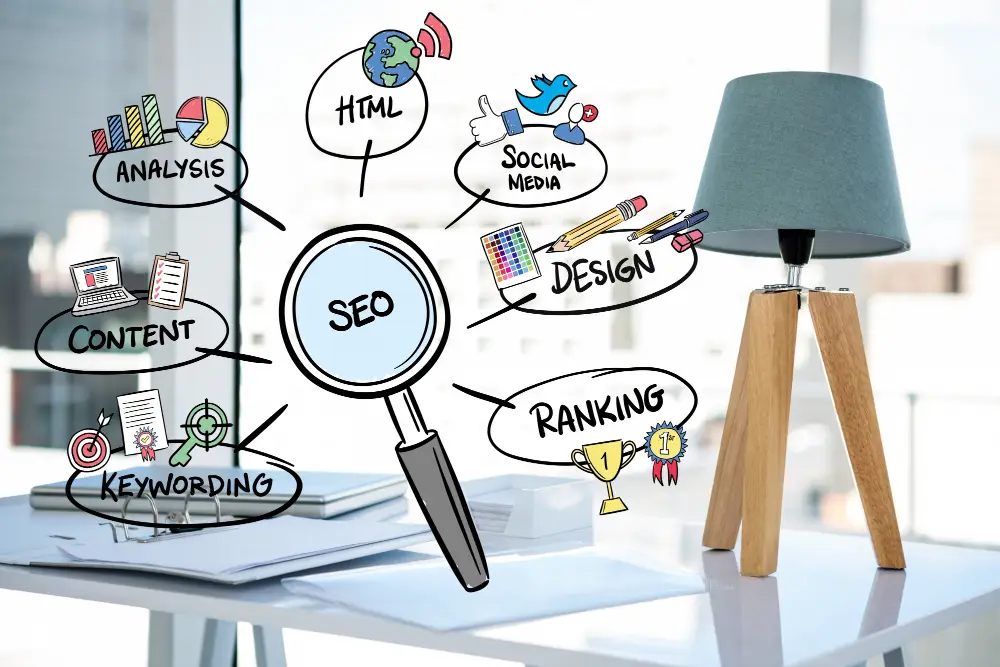Understanding the psychology behind how users interact with websites can provide valuable insights into creating more effective and engaging designs. Psychological principles can guide everything from layout and navigation to color schemes and content presentation. This guide will delve into key psychological principles and offer practical tips for incorporating them into your web design to enhance user experience.
1. Gestalt Principles

Overview
Gestalt principles explain how people perceive visual elements as whole structures rather than as individual parts. These principles can help create more organized and visually appealing designs.
Key Gestalt Principles
- Proximity: Elements that are close to each other are perceived as related.
- Similarity: Elements that look similar are perceived as part of the same group.
- Continuity: The eye follows paths, lines, and curves, creating a seamless flow.
- Closure: The mind fills in missing information to create a complete image.
- Figure/Ground: The eye differentiates an object from its surrounding area.
Implementation Tips
- Group Related Items: Use proximity to group related elements together, such as navigation links or product categories.
- Consistent Design Elements: Apply similarity by using consistent colors, shapes, and fonts for related elements.
- Flow and Direction: Use lines and paths to guide users through your content, creating a logical flow.
- Whitespace: Utilize whitespace to allow the mind to complete shapes and improve readability.
- Contrast: Ensure clear differentiation between foreground elements and background to focus attention.
2. Hick’s Law

Overview
Hick’s Law states that the time it takes to make a decision increases with the number and complexity of choices. Simplifying choices can enhance user experience by reducing cognitive load.
Implementation Tips
- Limit Options: Reduce the number of options presented to users at any one time. For example, use dropdown menus or filter options instead of displaying everything at once.
- Prioritize Content: Highlight the most important actions or information to guide users toward key decisions.
- Progressive Disclosure: Reveal information and options gradually as users need them, keeping interfaces clean and manageable.
3. Fitts’s Law

Overview
Fitts’s Law suggests that the time required to move to a target area (such as a button) is a function of the distance to the target and the size of the target. Larger and closer targets are easier to click.
Implementation Tips
- Clickable Elements: Make buttons and clickable areas large enough to be easily targeted.
- Strategic Placement: Place commonly used buttons and navigation elements within easy reach, reducing the distance users need to move.
- Whitespace: Use adequate whitespace around clickable elements to prevent accidental clicks on adjacent items.
4. The Serial Position Effect

Overview
The Serial Position Effect refers to the tendency of people to remember the first and last items in a series best, and the middle items worst. This is divided into the primacy effect and the recency effect.
Implementation Tips
- Primary Information: Place the most important information and calls-to-action at the beginning and end of your content.
- Highlight Key Actions: Ensure key actions like sign-ups or purchases are placed prominently at the start and end of processes.
- Content Segmentation: Break long lists or content into smaller segments to take advantage of the primacy and recency effects.
5. The Rule of Thirds

Overview
The Rule of Thirds is a visual composition principle that suggests dividing an image or layout into nine equal parts, using two equally spaced horizontal lines and two equally spaced vertical lines. Placing key elements along these lines or at their intersections creates a balanced and visually appealing composition.
Implementation Tips
- Layout Design: Align important elements like logos, calls-to-action, and images along the lines or intersections to create a balanced design.
- Visual Hierarchy: Use the Rule of Thirds to establish a clear visual hierarchy, guiding users’ attention to key areas.
6. Color Psychology

Overview
Color psychology explores how colors influence perceptions and behaviors. Different colors can evoke different emotions and responses.
Implementation Tips
- Color Schemes: Choose colors that align with your brand and evoke the desired emotions. For example, blue can convey trust and calm, while red can evoke excitement and urgency.
- Contrast: Use contrasting colors to make important elements stand out and enhance readability.
- Consistency: Maintain a consistent color scheme throughout your site to create a cohesive and professional look.
7. Cognitive Load Theory

Overview
Cognitive Load Theory suggests that the human brain has a limited capacity for processing information. Reducing cognitive load can improve user experience by making interactions simpler and more intuitive.
Implementation Tips
- Simplified Navigation: Create clear and straightforward navigation structures to help users find information easily.
- Clear Instructions: Provide concise and clear instructions for tasks, minimizing the effort required to understand and complete them.
- Minimalist Design: Avoid clutter by using a minimalist design approach, focusing on essential elements and content.
Conclusion
Incorporating psychological principles into your web design can significantly enhance user experience by making your website more intuitive, engaging, and user-friendly. By leveraging principles like Gestalt, Hick’s Law, Fitts’s Law, and the Rule of Thirds, you can create designs that not only look good but also function effectively. Additionally, understanding color psychology and cognitive load can help you make informed design choices that resonate with your audience and improve usability.


